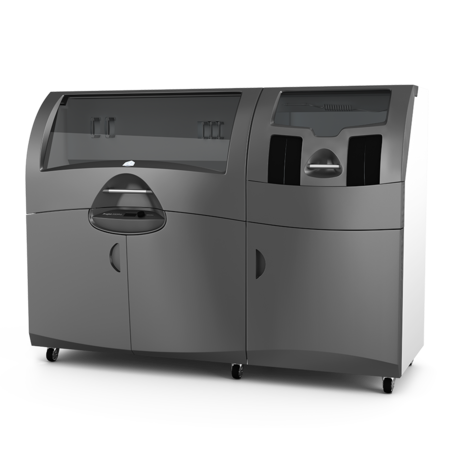Architects are trained to think in 3D, and with the help of new technology, they are improving their ability to communicate in the same terms.
To impress a potential client or competition jury, it helps to have a finely detailed architectural model to communicate concepts clearly. It also helps to have detailed 3D models throughout the entire design phase of a new project to correct engineering problems early on. The challenge has traditionally been the time and expense of model making, especially when innovative designs use complex shapes and forms.
Until recently, Henning Larsen Architects (HLA) of Copenhagen, Denmark, was no exception to the challenge. The world-renowned architectural firm, however, has discovered an entirely new technology that changes the architectural modeling game – 3D printing. A 3D printer creates a detailed physical object from 3D design data much as an office printer creates documents from word-processing files.
Challenge
3D printer produces intricate shapes quickly and easily
Together with Jørn Utzon (designer of the Sydney Opera House), HLA founder Henning Larsen has helped establish Denmark as a leader in contemporary architecture. Larsen is the creative genius behind world-class landmarks like the Danish Embassy in Riyadh, the Copenhagen Opera House, and the Roland Levinsky Building at the University of Plymouth, UK. To help to push the boundaries of architectural design, HLA continually improves its model-making process by investing in the latest 3D technology.
Using its ProJet® CJP 460Plus 3D printer, HLA can make precision models in less than a day. Previously, such models would have taken weeks to complete. The ProJet CJP 460Plus enables Henning Larsen’s architects to quickly print shapes that are difficult to craft by hand, such as double-curving surfaces and intricate elements like staircases.
“Since installing the printer, HLA has refined and enhanced its 3D model making process and reduced model build time and cost,” says Morten Steffensen, an engineer at HLA. Models can take as little as an hour to print depending on how much detail is included in the original CAD file. “The machine has created a much closer link between the physical and the digital world, allowing us to print component parts in color and construct models of buildings in 3D from the very beginning of the process,” he says.
The ProJet 460Plus has been created for the office environment and is designed to operate quietly, use safe build materials and produce zero liquid waste. The ProJet 460Plus automates a wide range of processes to minimize user touch time for setup and model removal. Time-saving machine functions include automated setup, self-monitoring, and automated powder loading and recycling.
Solution
‘Beautiful models’ win design competitions
3D printing helps HLA win commissions via design competitions, including the one to build the prestigious Reykjavik Concert and Conference Centre, Iceland.
“We use 3D printed parts together with laser cut parts and handmade elements to build models for competition entries,” says Steffensen. The interior of the Reykjavik model was printed on the ProJet 460Plus, and the skin of the building was laser cut. “Like the Reykjavik Conference Centre, the models are typically quite complex and help clearly communicate our ideas at the earliest stages of the competition process,” he says. “We were able to print two batches of interiors at a time on the Color Jet Printer (CJP). The entire model takes between 12 and 14 hours to print, plus assembly time.”
But build time is only one consideration when creating a model. Another is precision, which is where the ProJet 460Plus has really benefitted Henning Larsen.
“Whether it’s a competition or a project bid, there’s limited opportunity to get ideas across, so we need all the help we can get,” says Steffensen. “Thanks to 3D printing, our models are more refined and more precise, which gives us an advantage. There’s no doubt that beautiful models help us win commissions.”
Results
Government mandates require more models
With its robust 3D printing capability, HLA is well positioned to satisfy legislation in the EU that, according to Steffensen, will soon demand that architects produce multiple 3D models from early on in the design process. In HLA’s home country of Denmark, for instance, all buildings with a projected construction cost of more than €4 million will need their design produced as a physical 3D model before a contract can be awarded. The aim of the legislation is to reduce the number of potential snags during the construction of a new structure. It also means that any company wishing to bid on a project may benefit from a 3D printer to efficiently produce models for permitting. “As the ProJet 460Plus prints in color, designs are easier to interpret, which eases communication between the client and the building engineers,” Steffensen says. “The result is a better building, which is the aim of architecture in the first place.

